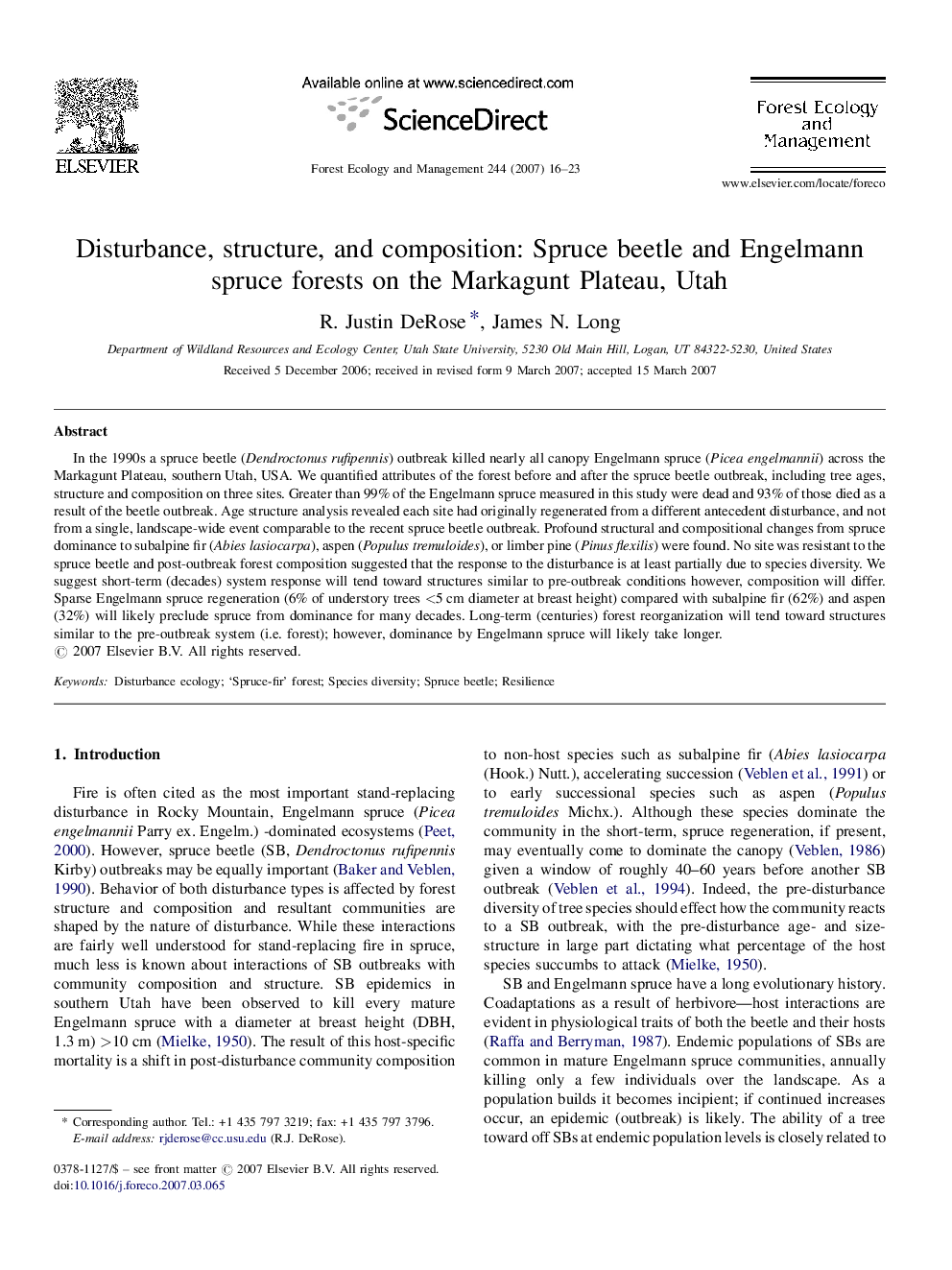| کد مقاله | کد نشریه | سال انتشار | مقاله انگلیسی | نسخه تمام متن |
|---|---|---|---|---|
| 89758 | 159355 | 2007 | 8 صفحه PDF | دانلود رایگان |

In the 1990s a spruce beetle (Dendroctonus rufipennis) outbreak killed nearly all canopy Engelmann spruce (Picea engelmannii) across the Markagunt Plateau, southern Utah, USA. We quantified attributes of the forest before and after the spruce beetle outbreak, including tree ages, structure and composition on three sites. Greater than 99% of the Engelmann spruce measured in this study were dead and 93% of those died as a result of the beetle outbreak. Age structure analysis revealed each site had originally regenerated from a different antecedent disturbance, and not from a single, landscape-wide event comparable to the recent spruce beetle outbreak. Profound structural and compositional changes from spruce dominance to subalpine fir (Abies lasiocarpa), aspen (Populus tremuloides), or limber pine (Pinus flexilis) were found. No site was resistant to the spruce beetle and post-outbreak forest composition suggested that the response to the disturbance is at least partially due to species diversity. We suggest short-term (decades) system response will tend toward structures similar to pre-outbreak conditions however, composition will differ. Sparse Engelmann spruce regeneration (6% of understory trees <5 cm diameter at breast height) compared with subalpine fir (62%) and aspen (32%) will likely preclude spruce from dominance for many decades. Long-term (centuries) forest reorganization will tend toward structures similar to the pre-outbreak system (i.e. forest); however, dominance by Engelmann spruce will likely take longer.
Journal: Forest Ecology and Management - Volume 244, Issues 1–3, 15 June 2007, Pages 16–23